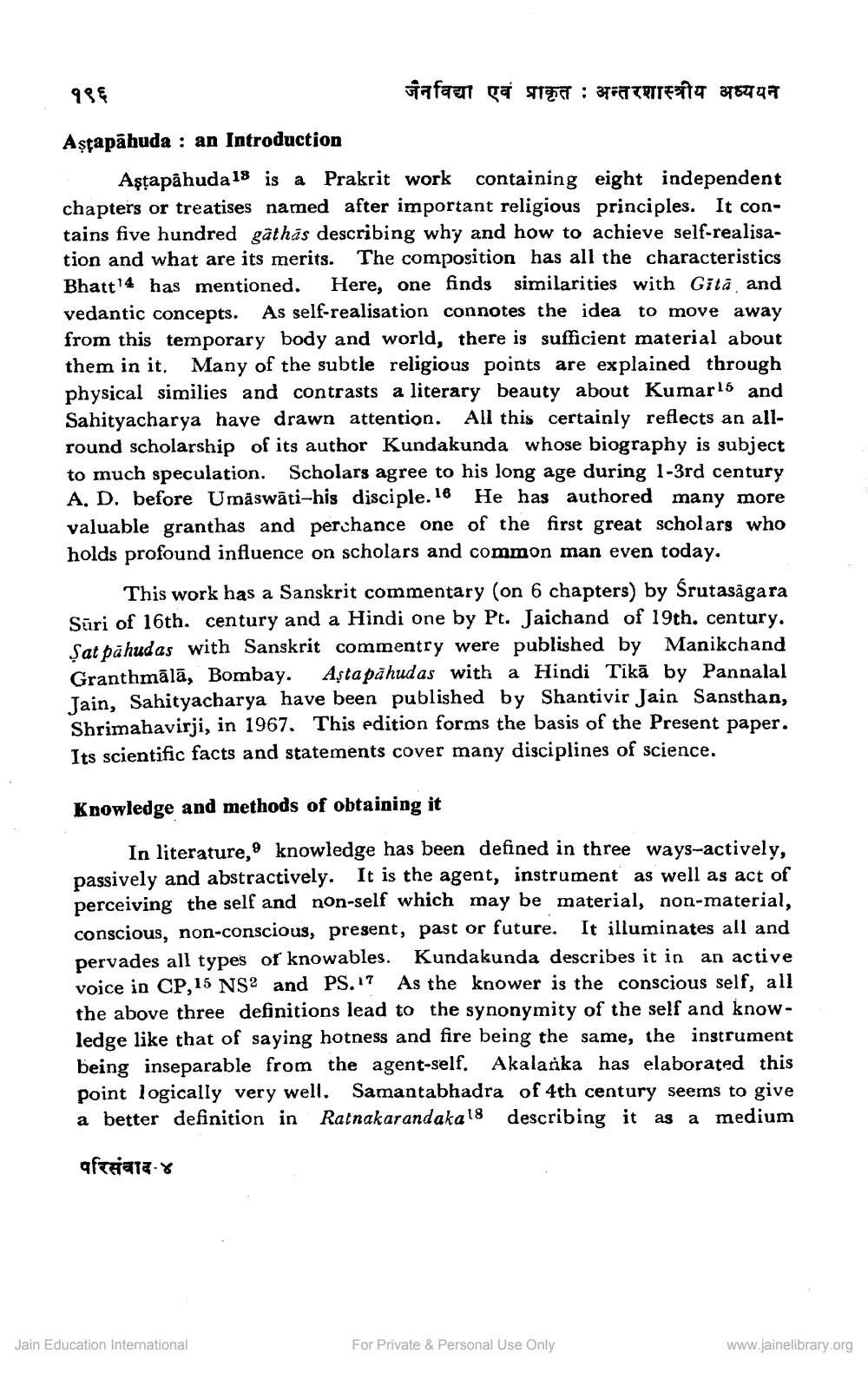Book Title: Scientific Contents Of Jaina Canons Astapahuda By Kundakunda Author(s): N L Jain Publisher: Z_Jain_Vidya_evam_Prakrit_014026_HR.pdf View full book textPage 3
________________ १९६ जनविद्या एवं प्राकृत : अन्तरशास्त्रीय अध्ययन Aṣṭapähuda: an Introduction Aşṭapāhuda 18 is a Prakrit work containing eight independent chapters or treatises named after important religious principles. It contains five hundred gathās describing why and how to achieve self-realisation and what are its merits. The composition has all the characteristics Bhatt 4 has mentioned. Here, one finds similarities with Gitä, and vedantic concepts. As self-realisation connotes the idea to move away from this temporary body and world, there is sufficient material about them in it. Many of the subtle religious points are explained through physical similies and contrasts a literary beauty about Kumar15 and Sahityacharya have drawn attention. All this certainly reflects an allround scholarship of its author Kundakunda whose biography is subject to much speculation. Scholars agree to his long age during 1-3rd century A. D. before Umaswati-his disciple. 18 He has authored many more valuable granthas and perchance one of the first great scholars who holds profound influence on scholars and common man even today. This work has a Sanskrit commentary (on 6 chapters) by Śrutasāgara Suri of 16th. century and a Hindi one by Pt. Jaichand of 19th. century. Şat pahudas with Sanskrit commentry were published by Manikchand Granthmālā, Bombay. Aştapahudas with a Hindi Tikā by Pannalal Jain, Sahityacharya have been published by Shantivir Jain Sansthan, Shrimahavirji, in 1967. This edition forms the basis of the Present paper. Its scientific facts and statements cover many disciplines of science. Knowledge and methods of obtaining it In literature, knowledge has been defined in three ways-actively, passively and abstractively. It is the agent, instrument as well as act of perceiving the self and non-self which may be material, non-material, conscious, non-conscious, present, past or future. It illuminates all and Kundakunda describes it in an active pervades all types of knowables. voice in CP,15 NS2 and PS.17 As the knower is the conscious self, all the above three definitions lead to the synonymity of the self and knowledge like that of saying hotness and fire being the same, the instrument being inseparable from the agent-self. Akalanka has elaborated this point logically very well. Samantabhadra of 4th century seems to give a better definition in Ratnakarandaka 18 describing it as a medium परिसंवाद- ४ Jain Education International For Private & Personal Use Only www.jainelibrary.orgPage Navigation
1 2 3 4 5 6 7 8 9 10 11 12
